Finding the best budget camera is a challenge. You often find yourself looking at old, secondhand, or renewed cameras. And sometimes, the source might not be reliable. But it doesn’t have to be that way.
We’ve compiled a list of the best budget cameras. We have everything, including DSLR, compact, and mirrorless cameras. And these aren’t inferior machines. They are good cameras at even better prices.
The Canon EOS R100 is the best budget camera right now. It’s one of Canon’s latest releases. And it’s also one of their most affordable cameras to date. It’s a compact mirrorless with excellent features for photos and video. It shows a little money can go a long way when you shop smart.
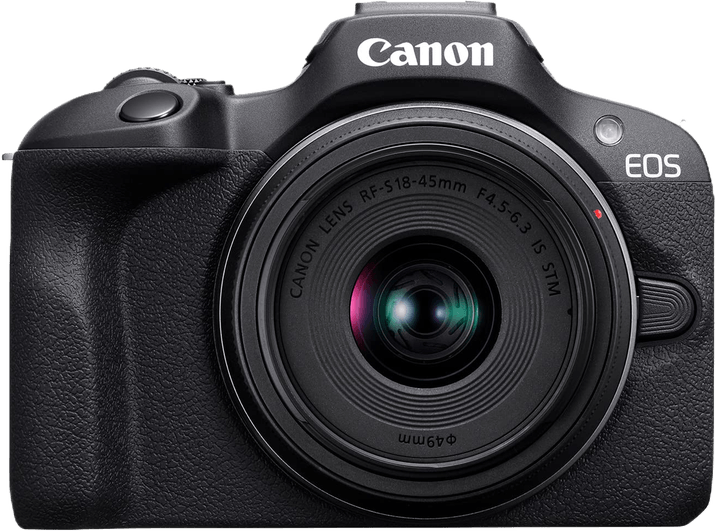
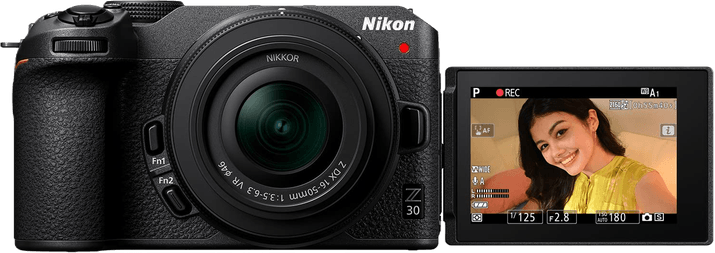
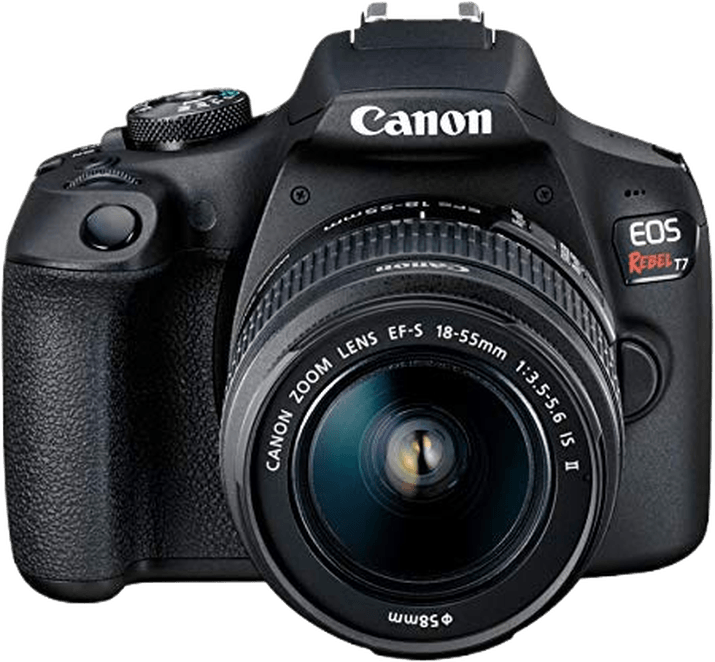
Let’s dive in and discover which is the best budget camera. We’ll see how the cameras compare, differ, and more!



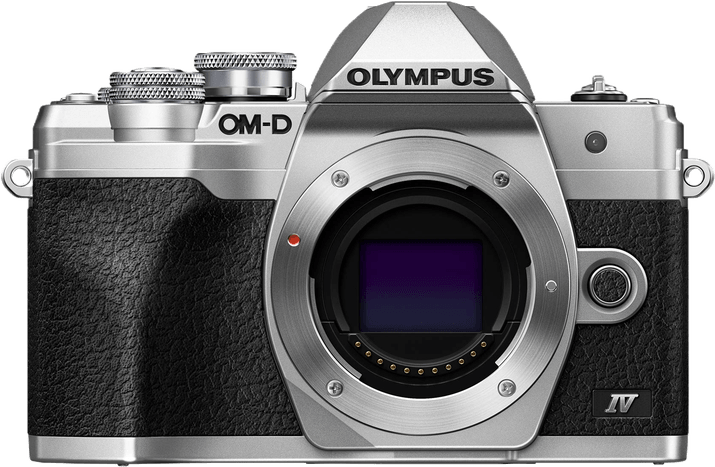
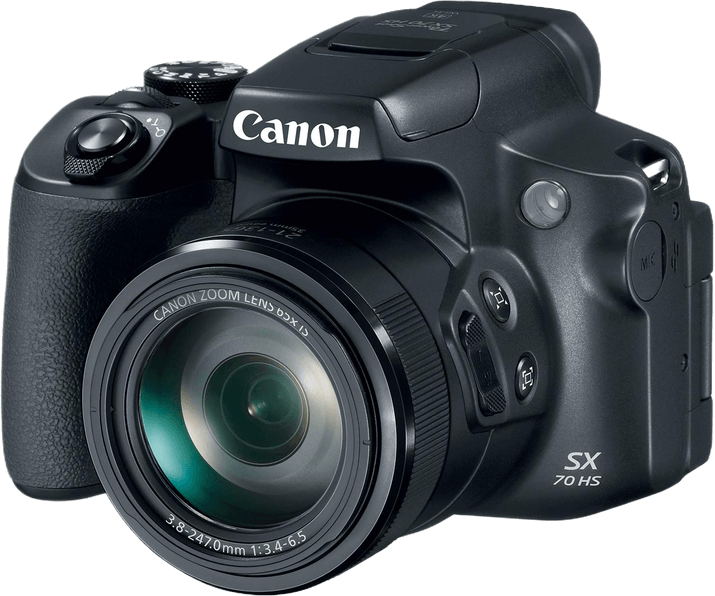
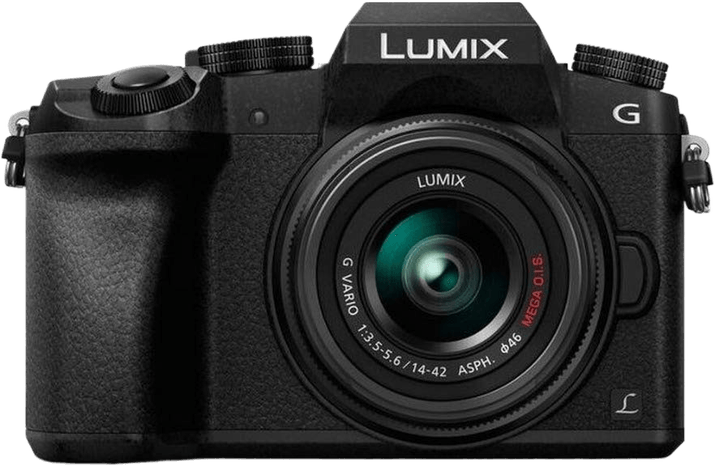
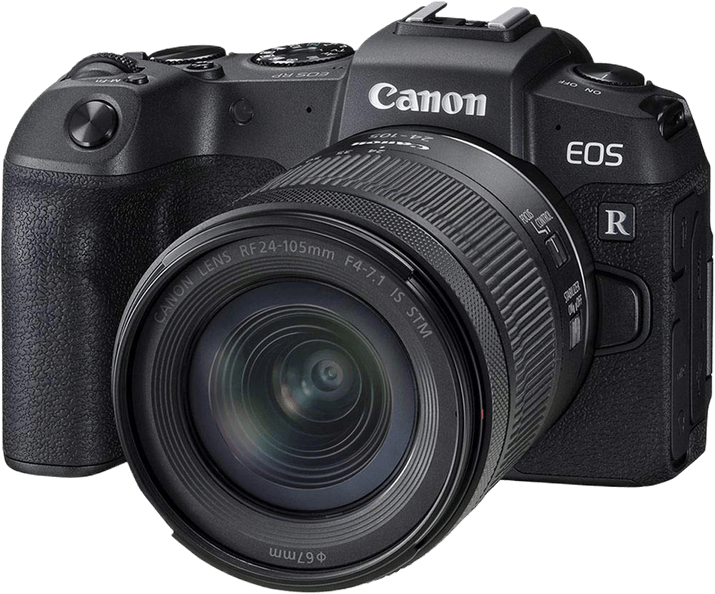

| Brand |
Brand
Canon
|
| Camera Type |
Camera Type
|
| Sensor Format |
Sensor Format
|
| Lens Mount |
Lens Mount
Canon RF
|
| Megapixels |
Megapixels
24 MP |
| In-body Stabilization |
In-body Stabilization
|
| Autofocus Points |
Autofocus Points
3,975 |
| Maximum ISO (Native) |
Maximum ISO (Native)
12,800 |
| Frame Rate |
Frame Rate
6.5 fps |
| Max Video Resolution |
Max Video Resolution
|
| Screen Size |
Screen Size
|
The Canon EOS R100 is one of Canon’s latest releases. But despite being brand new, it’s one of their most affordable mirrorless cameras. It was made to be a budget camera. But that doesn’t mean it can’t still be a good camera. In fact, it’s a great camera.
The R100 has an APS-C CMOS sensor. And this has a resolution of 24.1 MP, giving you high-quality images. It defies the price range with sharp, well-rendered photos. They’re bright, rich, and vibrant yet true to life.
The native 100-12,800 ISO range gives you plenty of wiggle room in changeable lighting. But you can also expand the top end to 25,600 if necessary. That allows you to keep working in low-light situations. You might experience some digital noise at higher levels, but the images stay clean until you hit the top numbers.
You can shoot in JPEG or RAW. The JPEG images look great if you’re taking pictures for fun. But the RAW images give you far more options in post-processing. You can make impressive changes using photo editing software.
With Canon’s Dual Pixel CMOS autofocus system, you get reliable focusing for photo and video. It uses 143 focus zones for accurate subject detection and tracking. It copes well with fast-moving subjects. And it has eye-detection AF for human subjects.
With 88% horizontal and 100% vertical AF coverage, the camera can detect and track subjects over most of the frame.
The burst mode is slow for a mirrorless camera. The max speed is 6.5 fps. But with the One-Shot AF mode, you get full autofocus support when using burst mode. That gives you razor-sharp action shots when shooting something like sports photography.
The quality video features make the C100 an affordable hybrid camera. You can shoot clear and sharp footage with 4K resolution at 24 fps. And if that frame rate isn’t enough, you can switch to Full HD (1080p). This gives you faster rates, including 60 and 120 fps. The Full HD footage is also uncropped.
The 120 fps frame rate gives you high-definition slow-motion videos. That’s another excellent feature for shooting fast action like sports or wildlife. The C100 also has ports for external audio devices like microphones. It’s an all-in-one unit for making movies.
You can also use the Canon R100 as a webcam. Pair it with your computer and the Canon webcam software, and it gives you live HD video. It’s great for vlogging and live streaming.
With an APS-C sensor, it’s lightweight and compact. The body weighs 0.78 lb / 356 g, which is feather-light even by mirrorless standards. It’s also small enough for any camera backpack, even day bags like the Wandrd Duo Daypack.
The ergonomic design is reminiscent of Canon’s older DSLR models. It has a comfortable grip that fits nicely into your hand. You can hold it for hours on end with no discomfort at all.
All the buttons and controls are nicely laid out. Even inexperienced users will master the controls in no time. The LCD screen is fixed and has no touch controls. This is one frustration with the R100. But it does have an excellent 2.34m dot electronic viewfinder.

| Brand |
Brand
Nikon
|
| Camera Type |
Camera Type
|
| Sensor Format |
Sensor Format
|
| Lens Mount |
Lens Mount
Nikon Z
|
| Megapixels |
Megapixels
20 MP |
| In-body Stabilization |
In-body Stabilization
|
| Autofocus Points |
Autofocus Points
209 |
| Maximum ISO (Native) |
Maximum ISO (Native)
51,200 |
| Frame Rate |
Frame Rate
11 fps |
| Max Video Resolution |
Max Video Resolution
|
| Screen Size |
Screen Size
|
The Nikon Z30 is a fantastic camera for vloggers or content creators. It’s an APS-C mirrorless, but it isn’t much bigger than a point-and-shoot camera.
Despite the small body size, the Z30 has an APS-C CMOS sensor. The image resolution is 21 MP, which isn’t record-breaking. The pictures are bright, clear, and rich in detail. You’ll notice a huge difference in quality compared to smartphone cameras.
You get good low-light flexibility with a native ISO range of 100 – 51,200. But you can also expend it out to 204,800, giving you even more options. It also controls digital noise well until you get to the very high ISO settings.
Using 209 focus points, the Z30 has reliable AF for photography and video. It has face and eye-detection capabilities, which makes it even more accurate when shooting or recording humans. It also tracks moving subjects as they move within the frame. That’s good news for animated vloggers.
An 11 fps burst is not particularly impressive for a mirrorless camera, but it’s still fast enough to capture fast-moving subjects in motion. You also get full AF coverage when shooting at 11 fps.
The video features are where the Z30’s strengths really lie. It delivers lovely, uncropped 4K footage. And there’s no 30-minute time limit, so you can shoot long-form videos for over two hours.
The battery might not last that long, but you can keep going thanks to the USB charging. Once connected, you have unlimited power and can record for as long as you need to.
The 4K video has a 30 fps frame rate that’s smooth and jerk-free. You can also switch to Full HD for a 120 fps frame rate. This gives you high-quality slow-motion footage.
Webcam functionality makes the Z30 a great option for YouTubers and live streamers. Delivering a 60 fps Full HD stream over USB-C or 4K 30 fps with a HDMI connection. You’ll look sharp and clear on Zoom, Twitch, or Instagram.
Even by mirrorless standards, the Nikon Z30 is compact and super lightweight, so it’s easy to take anywhere with you.
A rotating LCD screen makes it easier to record yourself for selfies or vlogs. There’s also a REC red light on the front of the camera to tell you when you’re recording.
It has a built-in stereo mic for high-quality sound recording. And the body has ports if you prefer using external audio equipment for better sound quality.

| Brand |
Brand
Canon
|
| Camera Type |
Camera Type
|
| Sensor Format |
Sensor Format
|
| Lens Mount |
Lens Mount
Canon EF-S
|
| Megapixels |
Megapixels
24.1 MP |
| In-body Stabilization |
In-body Stabilization
|
| Autofocus Points |
Autofocus Points
9 |
| Maximum ISO (Native) |
Maximum ISO (Native)
6,400 |
| Frame Rate |
Frame Rate
3 fps |
| Max Video Resolution |
Max Video Resolution
|
| Screen Size |
Screen Size
|
The Canon’s Rebel T7 is an excellent choice for people who like the look and feel of classic cameras. It’s the perfect budget DSLR for beginners.
The EOS Rebel T7 features a 24.1 MP APS-C CMOS Sensor. It’s an upgraded sensor. And it’s the highest image resolution in the Rebel lineup of entry-level DSLR cameras. The previous model, the Canon Rebel EOS T6, only has 18MP.
The new sensor, paired with a DIGIC 4+ image processor, delivers good images. Photos have a max resolution of 6000 x 4000 pixels. Regardless of shooting JPEGs or RAW files, you can expect edge-to-edge sharpness. And there is little to no distortion. Additionally, the Rebel T7 boasts all Canon cameras’ beloved, rich, vivid colors.
It has no built-in image stabilization and a max ISO of 6400. So, one area that’s not great is shooting in low-light conditions, like sunsets. You can only expect grain-free, low-light images up to ISO 1600. Higher than that, unwanted noise may start to appear in your photos.
Furthermore, the Canon Rebel T7 has a high dynamic range of just over nine. It’s good but not great and gives you some wiggle room when editing RAW images. But overall, this camera is better for photographers who shoot JPEGs.
Autofocus may be the biggest drawback of the Canon EOS Rebel T7. Whereas most new best budget cameras have over 100 AF points, it only has nine. Most people shoot exclusively in autofocus. So Canon’s decision not to upgrade the AF system is a real head-scratcher.
It takes approximately 0.1 seconds to find focus with direct sunlight. But that falls to 0.6 seconds if there is less light. These numbers are slower than average. But they are fine if you plan to shoot portraits or non-moving subjects.
What’s even stranger is the lack of autofocus capabilities when recording video. Autofocus can usually set focus before filming. But with the Rebel T7, you must make all focus adjustments manually once rolling.
On a positive note, subject tracking is available in AI Servo mode (Canon’s continuous AF). So is continuous shooting. The three-frame-per-second burst mode is by no means lightning-fast. But it gets the job done for slower-moving subjects.
The Canon Rebel T7 can’t capture 4K footage but has three distinct video formats—1080p Full HD, 720p HD, and 480p SD. The 1080p Full HD video can be shot at 24 or 30 fps, while you can shoot 720p at 60 fps. A good option for creating a slow-motion video? You can shoot at 60 fps and slow it down in post-production.
Shooting handheld movies is strongly discouraged. There is no in-body image stabilization (IBIS). Unless there is no other option, you will always want to use a tripod or gimbal. They help remove camera shake and generate much smoother movies.
One cool video feature is the Video Snapshot mode. It captures short video clips of up to eight seconds. And the camera automatically merges them to create a highlight video. Another extraordinary trait? You can edit your movies directly on the camera in playback mode. You can’t do everything, but basic adjustments like trimming are possible.
The Canon EOS Rebel T7 is incredibly light and compact for a DSLR camera. It weighs only 475 grams (battery included) and measures 129 x 101 x 78 mm. Its portability is, without a doubt, one of its most attractive features.
The plastic body has a textured rubber grip for extra comfort and control. Even though it’s plastic, it feels well-made and is reasonably durable. There is no weather sealing, though. You would have to keep it away from rain and dust.
Handling is a strong point of this camera. The layout of the buttons and dials is straightforward and perfect for beginners. You can quickly change the most-used settings by pressing a button or going to the Q menu. And if you need to enter the main menu, they are color-coded and easy to navigate.
Lastly, it uses the standard Canon EF lens mount. You can access some of the best and most popular budget lenses ever made!

| Brand |
Brand
Olympus
|
| Camera Type |
Camera Type
|
| Sensor Format |
Sensor Format
|
| Lens Mount |
Lens Mount
Micro 4/3
|
| Megapixels |
Megapixels
20 MP |
| In-body Stabilization |
In-body Stabilization
|
| Autofocus Points |
Autofocus Points
121 |
| Maximum ISO (Native) |
Maximum ISO (Native)
6,400 |
| Frame Rate |
Frame Rate
15 fps |
| Max Video Resolution |
Max Video Resolution
|
| Screen Size |
Screen Size
|
The Olympus OM-D is a beautiful and compact mirrorless camera with a retro look. It’s an excellent first camera for those looking to upgrade from smartphone photography.
The Olympus OM-D E-M10 Mark IV has a new 20 MP Micro Four Thirds sensor at its core. Micro Four Thirds (MFT) sensors are slightly smaller than APS-C sensors, measuring 17.4 x 13 mm. They are the go-to choice for Olympus and Panasonic crop sensor cameras.
Another essential thing to keep in mind about MFT sensors is that they apply a 2x crop factor to images. For example, the E-M10 Mark IV with the 14-42mm kit lens has an equivalent focal length of 28-84mm.
While its RAW files keep more detail, JPEG resolution is equally impressive. I recommend sticking with the smaller JPEG files for personal use and social media.
Since the sensor is small, you might expect poor low-light performance. But low-light shooting is a strength. That’s due to 5-axis stabilization that adds 4.5 stops of exposure. On top of that, it has a dynamic range of 12.5 with a TruePic VIII image processor.
The E-M10 Mark IV uses 121 point contrast detection autofocus. It’s an outdated system that is slower than hybrid phase-detection autofocus. It works well for static and slow-moving subjects. But it’s not great for sports or action photography.
There was a big issue with the previous model, the Olympus OM-D E-M10 Mark III. It would lock focus onto the wrong subject or the background in continuous AF. Luckily, the engineers at Olympus updated the AF algorithm, significantly reducing this problem.
Face and eye-detection AF have also improved. It now recognizes faces, such as profiles looking away from the camera. But there are problems with a busy background. It still struggles to consistently lock on and track subjects.
At first, the max frame rate of 15 fps sounds stellar. But the numbers aren’t great upon closer examination. The speed tumbles to a below-average 5 fps as soon as autofocus is activated.
It has high-quality 4K 30p video and built-in stabilization. So the E-M10 Mark IV is a terrific little video camera. The colors look natural and bright. Plus, the footage is usable straight from the camera.
Also, shooting handheld videos is possible thanks to in-body image stabilization. The results are even smoother when paired with a stabilized lens like the Panasonic 42.5mm f/1.7 prime lens.
Another premium video feature is recording slow-motion movies directly in the camera. The mode uses 720p/120p video settings and plays back at 30 fps. That gives it a playback speed 4x slower than in real life.
Additionally, it features a tilting screen which is excellent for vloggers. My biggest complaint is the lack of a microphone and a headphone jack.
The Olympus OM-D E-M10 Mark IV manages to be both stylish and user-friendly. It measures 122 x 84 x 49 mm, weighs 383 grams (battery included), and has an attractive silver and black retro design.
The first things that jump out are the two control dials on the top of the camera. Because crop sensor cameras are more compact, most only include one dial. I love having two! In my experience, it makes adjusting the exposure settings far quicker.
The rest of the buttons are well-placed. You can control the camera using only one hand. Also, there are three customizable buttons on the back of the camera. Overall, the design and handling are two of the biggest strengths of this Olympus OM-D E camera.
Lastly, it uses the Micro Four Thirds lens mount system. All MFT lenses are the same. This means tons of compatible lenses are available. You can look at Olympus, Panasonic, and third-party lenses.

| Brand |
Brand
Canon
|
| Camera Type |
Camera Type
|
| Sensor Format |
Sensor Format
|
| Lens Mount |
Lens Mount
Fixed
|
| Megapixels |
Megapixels
20 MP |
| In-body Stabilization |
In-body Stabilization
|
| Autofocus Points |
Autofocus Points
9 |
| Maximum ISO (Native) |
Maximum ISO (Native)
3,200 |
| Frame Rate |
Frame Rate
10 fps |
| Max Video Resolution |
Max Video Resolution
|
| Screen Size |
Screen Size
|
The Canon PowerShot SX70 HS is a fantastic bridge camera at an amazing price. A bridge gives you the ease of use of a point-and-shoot but the performance and control of a DSLR. They are perfect for anyone wanting impressive results without having to learn photography theory.
The camera’s sensor is smaller than APS-C, but it still delivers a 20.3 MP resolution. The images are clear and bright with true-to-life colors.
It has a fixed lens, so you don’t need to spend money on lenses. It gives you an incredible 65x optical zoom for close-up shots of distant subjects. And because it’s an optical zoom, you don’t lose any quality as you zoom in.
The SX70 does have an image stabilization (IS) system, helping you get sharp shots when zoomed in. It isn’t the best IS in the world, but it does make a difference to clarity and sharpness when shooting distant subjects.
The camera also struggles in low light, as the 3,200 max ISO doesn’t give you much wiggle room.
A 10 fps continuous shooting rate is great for a bridge camera. That means you can use the zoom lens and fast burst for wildlife or sports photography.
Thanks to the short minimum focus distance, you can also use the lens for macro photography.
A face-detection AF system gives you good accuracy when snapping people. The tracking isn’t the most reliable, but it can cope with some movement from your subjects.
The PowerShot SX70 might surprise people in the video department. It captures crisp 4K footage with a smooth 30 fps frame rate.
You can also use a cropped 4K to extract still images from your footage. The images don’t have the resolution as standard stills shot in photography mode. But it gives you an even faster burst mode for rapid action.
You can also create stunning 4K time-lapse videos in-camera. A built-in intervalometer allows you to shoot accurate time-lapses without additional equipment.
The ergonomic design is excellent, fitting nicely in any adult’s hands. The size and shape are much like that of a Canon APS-C DSLR, something like the Rebel T7.
Weighing 608 g, it is on the heavy side, particularly when compared to modern mirrorless cameras. But it still fits nicely into any decent camera backpack.

| Brand |
Brand
Panasonic
|
| Camera Type |
Camera Type
|
| Sensor Format |
Sensor Format
|
| Lens Mount |
Lens Mount
Micro 4/3
|
| Megapixels |
Megapixels
16 MP |
| In-body Stabilization |
In-body Stabilization
|
| Autofocus Points |
Autofocus Points
49 |
| Maximum ISO (Native) |
Maximum ISO (Native)
25,600 |
| Frame Rate |
Frame Rate
7 fps |
| Max Video Resolution |
Max Video Resolution
|
| Screen Size |
Screen Size
|
The Panasonic Lumix G7 is the best budget camera is you’re serious about video production. Panasonic makes some of the best hybrid cameras. And while the photo specs are slightly dated, the G7 still beats many newer cameras when it comes to video.
A Micro Four Thirds sensor gives you a 16 MP image resolution. This isn’t great compared to new mirrorless models. But the images are still excellent and far better than anything a smartphone can produce.
You have decent flexibility in low light thanks to the 100 – 25,600 ISO range. The dynamic range is also surprisingly good considering the low MP count and smaller sensor size.
It also has a primitive dual-axis electronic level system to provide some stabilization. It can make a significant different to sharpness if you’re struggling for light.
The 49-point focus system seems a little primitive compared to more modern systems. But it’s still accurate and reliable, even with moving subjects.
Face-detection focusing is a godsend when photographing or recording people. It also tracks moving subjects when shooting stills or recording video.
The 7 fps burst rate is decent but not outstanding. However, a 4K video option gives you a faster burst by allowing you to take stills from 4K footage. The stills only have an 8 MP resolution, but you can capture the fastest action.
The video features are where the G7 really defies its age. With sharp, vibrant 4K recording at 30 fps, you get footage that’s better than most things you see on social media. It has three specialist 4K modes to help you refine your videography style.
A 60 fps option in Full HD gives you even smoother playback.
The body doesn’t have any ports for external devices, but you can connect microphones using the hot shoe connection.
As a Micro Four Thirds camera, the Panasonic Lumix G7 is compact and lightweight. It fits nicely in your hand, and you’ll have no problem finding space for it in your camera backpack.
A flip-out, rotating touchscreen is excellent for video production. It also makes composition easier when shooting stills from tricky angles. A bright, clear viewfinder also makes it easy to compose your shots the old-fashioned way.
On-camera knobs and dials make it easy to switch between modes and quickly change settings.

| Brand |
Brand
Canon
|
| Camera Type |
Camera Type
|
| Sensor Format |
Sensor Format
|
| Lens Mount |
Lens Mount
Canon RF
|
| Megapixels |
Megapixels
26 MP |
| In-body Stabilization |
In-body Stabilization
|
| Autofocus Points |
Autofocus Points
4,779 |
| Maximum ISO (Native) |
Maximum ISO (Native)
40,000 |
| Frame Rate |
Frame Rate
5 fps |
| Max Video Resolution |
Max Video Resolution
|
| Screen Size |
Screen Size
|
The Canon EOS RP is a budget camera with a full frame sensor. Being a budget camera is a relative thing, and it is pricier than most of the other cameras on this list. But that’s because full frame cameras are more expensive generally.
As stated, the Canon EOS RP has a full frame CMOS sensor, which is bigger than APS-C and Micro Four Thirds sensors. The larger surface area allows for more megapixels, and the RP has a healthy resolution of 26 MP.
Image quality is a real strong point for the RP. There are plenty of high-resolution cameras with more powerful sensors, but the detail and clarity here is fantastic.
The larger sensor also gives you better low-light performance and a wider dynamic range. It reduces the risk of digital noise at high ISOs, and it brings out more detail in light and dark areas.
A native ISO range of 100 – 40,000 gives you good flexibility. But you can extend this to 50 – 102,400. The 50 ISO setting gives you even better image quality.
Burst mode isn’t the RP’s strong point, with a max of 5 fps using the mechanical shutter. But those are full-res images and you get AF support when bursting.
The autofocus, however, is a real highlight of this camera. It uses Canon’s world famous Dual Pixel AF system that gives you nearly full frame coverage of your scene.
A selection of AF modes gives you even better support. There’s zone focusing, eye-detection, and face tracking. You can also touch and drag on the touchscreen to keep moving subjects in focus.
It does gives you sharp videos with a 4K resolution. But the frame rate is limited to 24 fps when shooting at full res. That can look sluggish compared to 30 fps 4K video.
Shooting in Full HD does give you a 60 fps option, but you do lose some quality. It does have digital video stabilization, which helps you shoot without a tripod or gimbal.
The RP doubles as a high-resolution webcam, perfect for live streaming or conference calls.
Despite it’s full frame sensor, the Canon EOS RP is svelte and lightweight. It’s more angular than Canon’s DSLR cameras, but it’s smaller and lighter than their DSLR full frame machines.
A rotating touchscreen is always beneficial. And a bright electronic viewfinder helps you compose shots that way.
Finding the best budget camera is not easy. There are so many amazing cameras out there, but finding one in your budget can be tricky. But as we’ve shown, it’s not impossible. You can buy excellent cameras without needing to take out a loan.
The Canon EOS R100 is the best budget camera right now. It’s a mirrorless camera with great specs for photography and video. It’s easy to use, which is great for beginners or techn-shy users. And the price is more-than-reasonable, especially as it comes with a kit lens.



